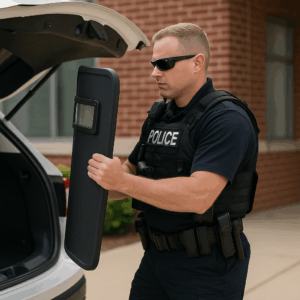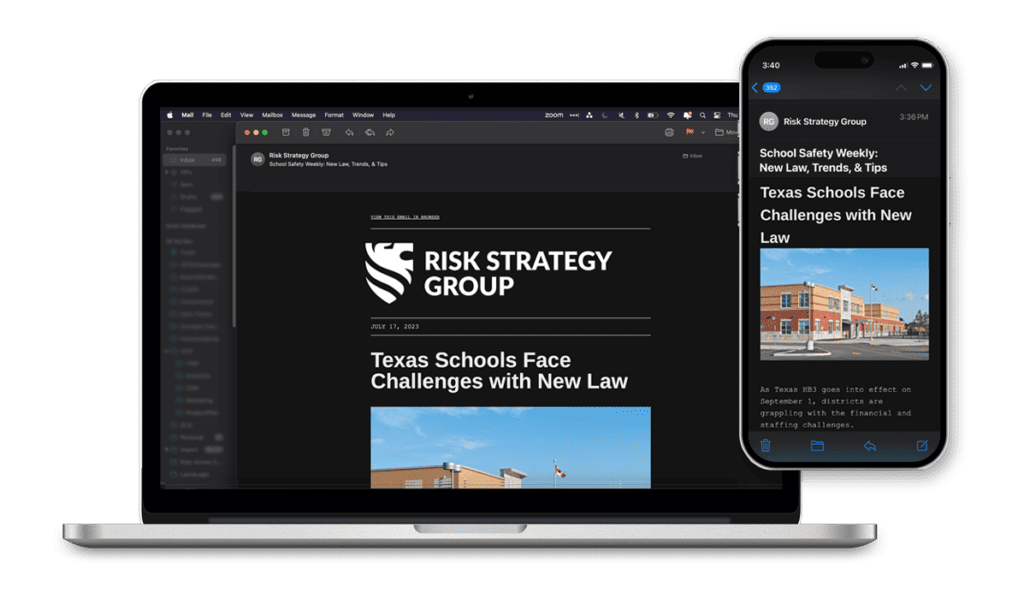Creating safer educational environments is a critical concern in modern education, and the role of school safety drills is pivotal in this context.
Traditional approaches, characterized by their predictability, are increasingly viewed as inadequate for preparing students and staff for the unpredictability of real emergencies.
With that in mind, let’s explore the complexities of school drills, emphasizing the insights from Dr. Jaclyn Schildkraut’s research for more effective strategies as it relates to school drills.
The Issue with Predictable Drills
School drills, particularly lockdowns, are traditionally scheduled events with prior staff knowledge. This predictability contrasts starkly with the nature of real-life emergencies, raising concerns about the actual preparedness it fosters.
The structured nature of these drills may create a misleading sense of security, potentially leaving students and staff underprepared for unexpected situations.
Dr. Jaclyn Schildkraut’s Research
Insights Dr. Jaclyn Schildkraut, a prominent figure in school safety research, has conducted significant studies on the impact of lockdown drills.
Working with the Syracuse City School District, her focus on key lockdown procedures revealed that consistent practice led to substantial improvements in emergency response capabilities.
Her work underscores the necessity for drills that are regular, varied, and realistically simulate emergency conditions to ensure genuine preparedness.
Strategies for Enhancing Drill Effectiveness
Unpredictability and Realism in Drills
Introducing unpredictability and realism into drills is vital.
Randomly timed drills that simulate a variety of emergency scenarios can significantly enhance preparedness, closely mirroring the unpredictable nature of real emergencies.
Incorporating surprise elements in drills, such as unannounced timings or varying the nature of the simulated threat, tests and improves the responsiveness of students and staff, providing a more authentic experience of emergency conditions.
Comprehensive Participation
The effectiveness of drills hinges on the involvement of the entire school staff, including non-teaching personnel.
Ensuring that every individual, from educators to maintenance staff, is prepared to respond effectively in emergencies is critical.
This inclusive training approach cultivates a culture of shared responsibility and comprehensive preparedness, acknowledging that emergencies can occur in any school area and involve any person.
Trauma-Informed Approach
The implementation of trauma-informed drills is crucial, particularly for younger students, to prevent undue stress or trauma.
While realistic simulations are key to effective drills, it’s essential to balance realism with sensitivity to the emotional well-being of participants.
Carefully crafted drills that consider the psychological impact on students and staff can improve participation and effectiveness without causing unnecessary distress.
Regular Reviews and Updates
Emergency protocols and threats are constantly evolving, necessitating the regular updating of drill procedures.
This process involves learning from past incidents, incorporating new research insights, and adapting to changing school dynamics.
Schools should establish a routine of post-drill evaluations, gathering feedback from participants to identify areas of improvement, and adjusting strategies accordingly.
Integration with School Safety Plans
Safety drills should be integrated into broader school safety strategies, encompassing emergency response plans, positive school climate initiatives, and situational awareness.
Given the unique characteristics of each school, safety plans and drills should be customized to address specific needs and circumstances.
This integrated approach ensures a comprehensive and cohesive strategy for school safety, addressing all aspects of emergency preparedness.
Community and Expert Involvement
Collaboration with local law enforcement and safety experts enhances the realism and effectiveness of drills.
Involving parents and the broader community in safety strategies promotes a holistic approach to school safety, fostering collective responsibility and action.
This partnership ensures that safety training is not just a school-centric activity but a community-wide commitment to protecting students and staff.
Expanding School Safety Beyond Drills
While drills are essential, they are just one component of a larger safety ecosystem in schools.
Schools must also focus on creating environments that discourage violence and foster positive behavior.
This includes implementing social-emotional learning programs, behavior interventions, and restorative discipline strategies.
Schools should also prioritize mental health support, recognizing the role emotional well-being plays in overall safety.
By addressing these broader aspects, schools can create a more comprehensive safety culture that extends beyond the confines of emergency drills.
Conclusion
The path to effective school safety drills involves a shift from conventional, predictable methods to approaches that are dynamic, realistic, and inclusive.
Drawing from Dr. Jaclyn Schildkraut’s research and best practices in emergency preparedness, schools can significantly enhance their readiness for emergencies.
By adopting these strategies, schools can not only create a safer environment but also foster a culture of preparedness, responsibility, and resilience among students and staff.
If you find this topic interesting be sure to sign up for our newsletter as we will be digging deeper into this context in future posts.
As always, if you need assistance in anything related to safety and security, including drills, feel free to reach out.








